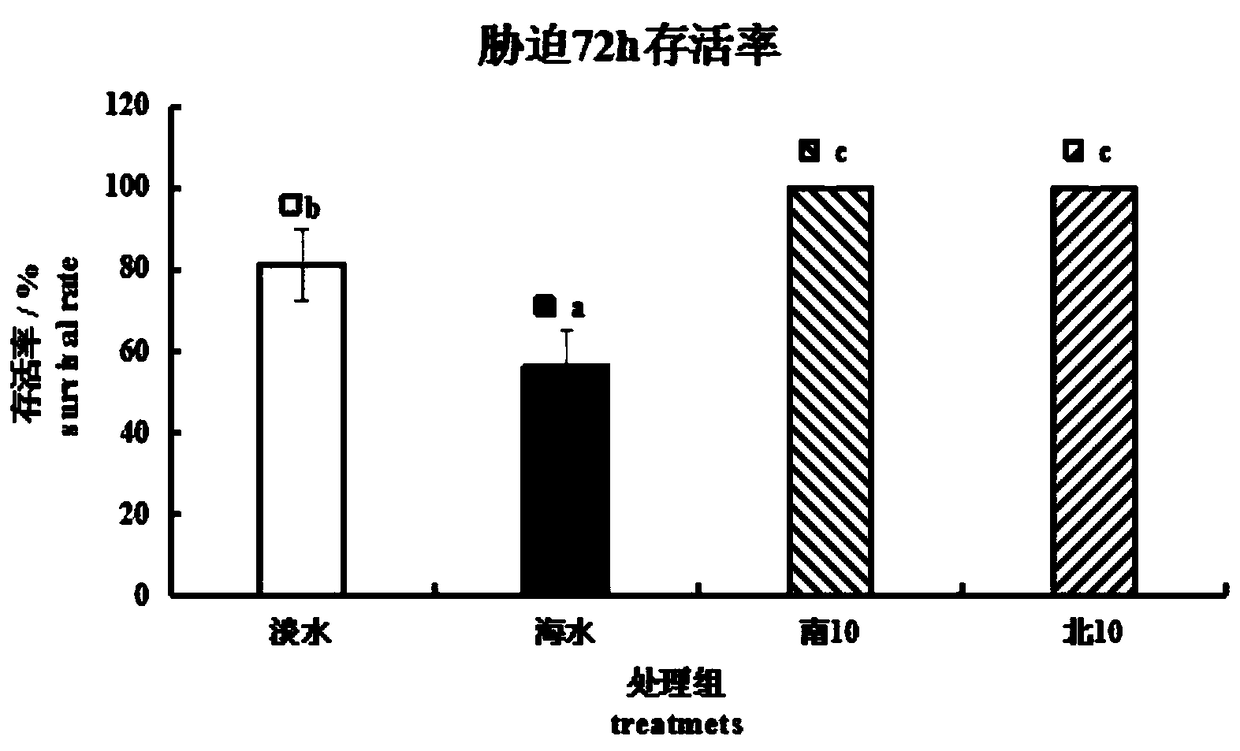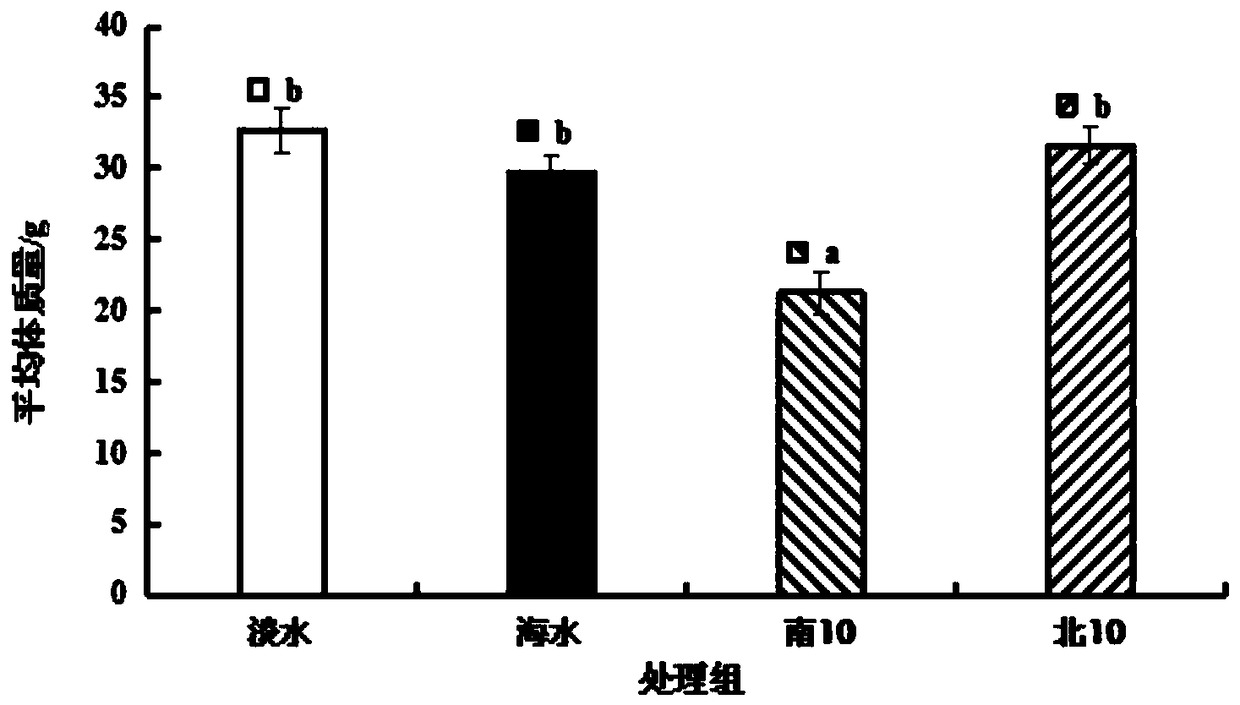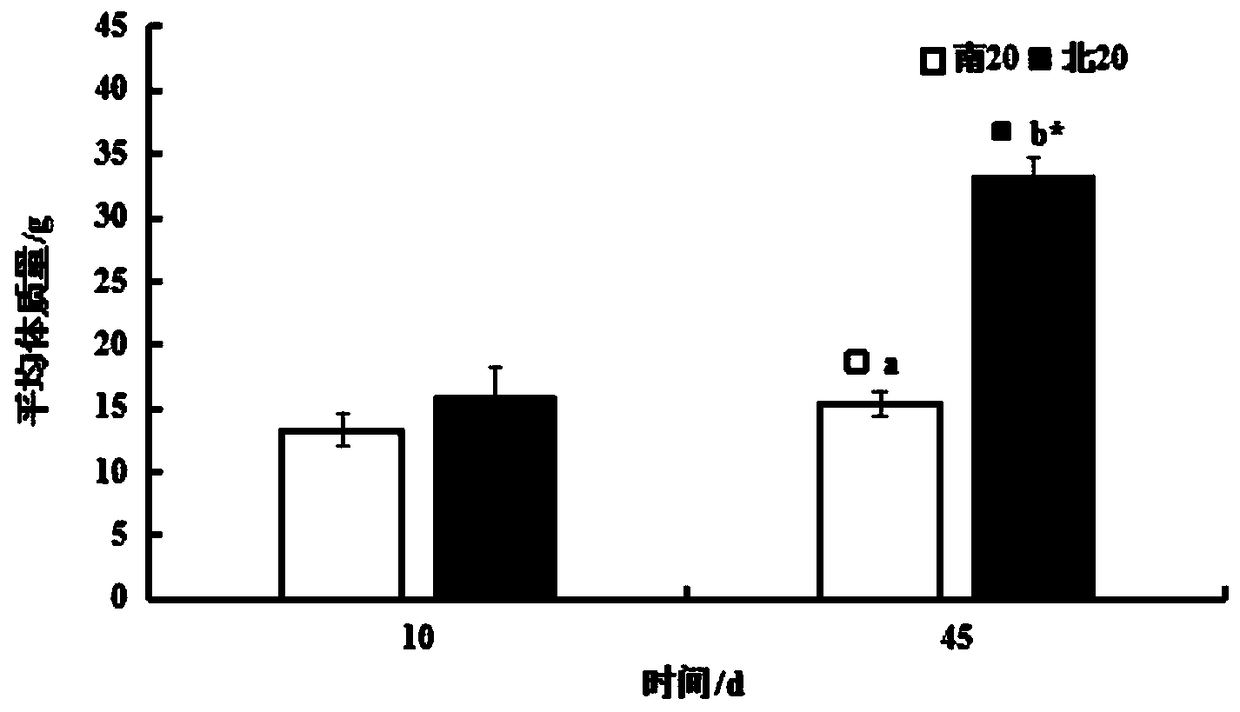Long-term safe breeding method for lateolabrax japonicus juvenile fish
A breeding method and technology of sea bass, which can be used in fish farming, application, climate change adaptation, etc., and can solve problems such as the lack of clear conclusions about population division
- Summary
- Abstract
- Description
- Claims
- Application Information
AI Technical Summary
Problems solved by technology
Method used
Image
Examples
Embodiment 1
[0013] Example 1: Determination of alkalinity tolerance range and safe breeding alkalinity of early juvenile perch:
[0014] 1 Materials and methods
[0015] 1.1 Experimental objects
[0016] The experiment was completed from late March 2018 to late May of the same year. The juvenile perch used in the experiment and the experimental site were provided by Dongying Lijin County Shuangying Aquatic Seed Co., Ltd. The fish used in the experiment were self-propagating commercial juvenile perch in the north and commercial juvenile perch purchased in the south. Before the experiment, the juvenile fish were healthy and fed normally. 1.2 Experimental steps
[0017] In this experiment, four alkalinity groups were designed, namely, alkalinity 10, 15, 20, and 30, and the freshwater and seawater groups were used as the corresponding control groups. Group fish body, other groups of fish body is the southern fish body, and there are 8 treatment groups in the experiment. The culture conta...
Embodiment 2
[0031] Embodiment 2: the technical method of distinguishing the southern and northern populations of perch
[0032] 1 Materials and methods
[0033] 1.1 Experimental objects
[0034] The selected experimental object is the same as in Example 1.
[0035] 1.2 Experimental steps
[0036] The long-term breeding experiment is the same as in Example 1.
[0037] South and North alkalinity 20 groups were cultured at alkalinity 20 for 10 days, and 50 fish bodies were selected from each group, and transferred to the freshwater group for recovery culture experiments. Two replicates were set for each treatment group. After 45 days of recovery in fresh water, the average body weight was weighed.
[0038] 1.3 Data analysis
[0039] 2 results
[0040] All experimental data processing and analysis are the same as in Example 1.
[0041] 2.1 The effect of alkalinity on the body weight of the southern and northern juvenile perch
[0042] The average body weight of the southern alkalinity...
PUM
 Login to View More
Login to View More Abstract
Description
Claims
Application Information
 Login to View More
Login to View More - R&D
- Intellectual Property
- Life Sciences
- Materials
- Tech Scout
- Unparalleled Data Quality
- Higher Quality Content
- 60% Fewer Hallucinations
Browse by: Latest US Patents, China's latest patents, Technical Efficacy Thesaurus, Application Domain, Technology Topic, Popular Technical Reports.
© 2025 PatSnap. All rights reserved.Legal|Privacy policy|Modern Slavery Act Transparency Statement|Sitemap|About US| Contact US: help@patsnap.com



